|
Need Help?
|
|
Call
1-800-372-3706
to
speak to a Veterinary Behavior Technician |
|
Paws To Speak!
Member
Main Menu
|
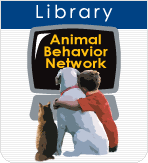 |
|
Help is at your
fingertips by library, email and
phone. |
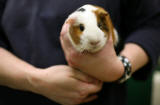
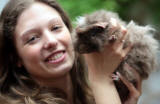
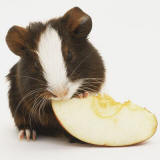
|
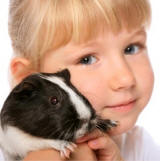
Why Gentling Exercises?
Prevent aggression. Teach your Pet good manners and prevent your guinea pig from developing bad habits. Sadly, pets are often surrendered to shelters when they develop unwanted behaviors such as biting or scratching people.
Gentling is a collection of handling techniques to help you intentionally develop a friendly, loving, confident, gentle personality, and loving companion.
What are the benefits to gentling?
- Your guinea pig learns that you are not threatening.
- Your guinea pig bonds more to you and wants to be with you and learn from you.
- Gentle leadership significantly reduces inappropriate aggressive behavior.
- Gentling teaches the guinea pig to trust you.
- The guinea pig becomes accustomed to routine examination.
Stress tolerance. The guinea pig learns to tolerate a small amount of stress. When mild stress is experienced, but nothing bad happens, your guinea pig builds self confidence, which contributes to a friendly confident personality. If your Pet becomes stiff or threatens you during gentling exercises, stop and try again later.
How do I do gentling exercises?
Gentling exercises include three components: Massage, Range of Motion, and Restraint.
Massage is different from "petting" or "grooming." During massage, you move the skin over underlying body as far as it will go. Do it gently with a loving touch. Move it back and forth and in a circular motion. Do this body massage over every square inch of the guinea pig.
Range of Motion means gently moving the guinea pig's extremities. Once you can massage your guinea pig without any struggling, begin to move the head and limbs in every comfortable position. Your hands teach your Pet that you are the gentle leader and trustworthy. Be sure that there is no discomfort while you are doing this exercise.
Home Exam. When the Pet is relaxed with your handling, begin your routine monthly health examination. Even if you don't know what to look for, just begin to look at every inch of the guinea pig to learn what is normal for this guinea pig. Look at the teeth, ears, paws, nails, and belly.
|